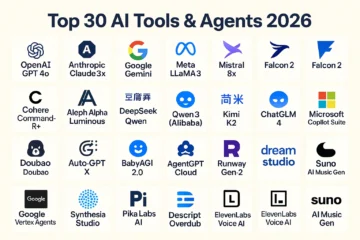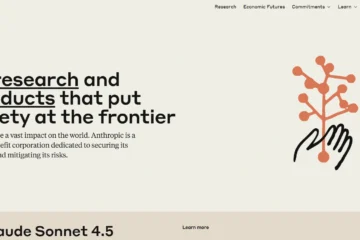
Aya Vision 2025: A Deep Dive into Cohere For AI’s Multilingual Vision-Language Model
Aya Vision 2025: A Deep Dive into Cohere For AI’s Multilingual Vision-Language Model
Key Points
- Aya Vision, developed by Cohere For AI, is an open-source vision-language model supporting 23 languages, excelling in tasks like image captioning and visual question answering.
- It seems likely that Aya Vision outperforms models like Llama-3.2 90B Vision and Qwen2.5-VL 72B, with win rates of 49-63% on AyaVisionBench.
- Research suggests its use of synthetic annotations enhances efficiency, using fewer resources while maintaining competitive performance.
- The evidence leans toward Aya Vision being available on platforms like Hugging Face and WhatsApp, making it accessible for global communication.
Introduction
Aya Vision is a cutting-edge tool in the world of artificial intelligence, designed to handle both images and text across 23 languages. Developed by Cohere For AI, it’s part of a broader effort to make AI more inclusive and effective for people worldwide. This blog post dives into what makes Aya Vision special, how it works, and why it matters in 2025.
Features and Performance
Aya Vision can do a lot, from describing images to answering questions about them and even translating content. It comes in two sizes: 8B and 32B parameters, with the larger model showing strong results compared to others like Llama-3.2 90B Vision. For example, it has win rates of 49-63% on AyaVisionBench, a new benchmark created by Cohere For AI to test such models.
Accessibility and Use
You can try Aya Vision on platforms like Hugging Face, where you can download and experiment with it, or even chat with it on WhatsApp (WhatsApp Integration). This makes it easy for researchers and everyday users to see what it can do, fostering global communication.
Unexpected Detail: Efficiency Through Synthetic Data
One interesting aspect is how Aya Vision uses synthetic annotations—data generated by AI itself—to train. This approach, as noted in a TechCrunch article, helps save resources while keeping performance high, which is great for researchers with limited computing power (TechCrunch Article).
Comprehensive Analysis of Aya Vision by Cohere For AI
Overview and Background
In the dynamic field of artificial intelligence, the demand for models that can process both visual and textual information across multiple languages is growing. Aya Vision, introduced by Cohere For AI on March 4, 2025, addresses this need with a state-of-the-art vision-language model (VLM) supporting 23 languages. This model is part of Cohere’s broader Aya project aimed at advancing multilingual AI (Aya Page).
Features and Capabilities
Aya Vision is versatile, capable of tasks such as image captioning, visual question answering, text generation, and translating both text and images across its 23 supported languages. The model is available in two parameter sizes: 8B and 32B, each tailored for different levels of complexity (RoboFlow Analysis).
Technical Details and Training
Technically, Aya Vision uses the SigLIP2 patch14-384 vision encoder and employs synthetic annotations for training efficiency. This method allows it to achieve high performance with fewer resources, a trend supported by Gartner’s 2024 estimate that 60% of AI training data is synthetic (TechCrunch).
Performance and Benchmarking
The 32B model outperforms models like Llama-3.2 90B Vision and Qwen2.5-VL 72B, with win rates of 49-63% on AyaVisionBench and 52-72% on mWildVision (AyaVisionBench). This benchmark evaluates VLMs across nine task categories in 23 languages.
Applications and Accessibility
Aya Vision is integrated into platforms like WhatsApp and available on Hugging Face (Aya Vision 8B, Aya Vision 32B), fostering global use under a CC BY-NC 4.0 license (VentureBeat).
Community and Future Directions
The community is exploring creative applications, like AI podcasts (Kokoro Podcast Generator), with potential for expanding language support in the future.
Performance Comparison Table
| Model | AyaVisionBench Win Rate (%) | mWildVision Win Rate (%) |
|---|---|---|
| Aya Vision 32B | 49-63 | 52-72 |
| Llama-3.2 90B Vision | – | – |
| Molmo 72B | – | – |
| Qwen2.5-VL 72B | – | – |
| Aya Vision 8B | Up to 79 | Up to 81 |








